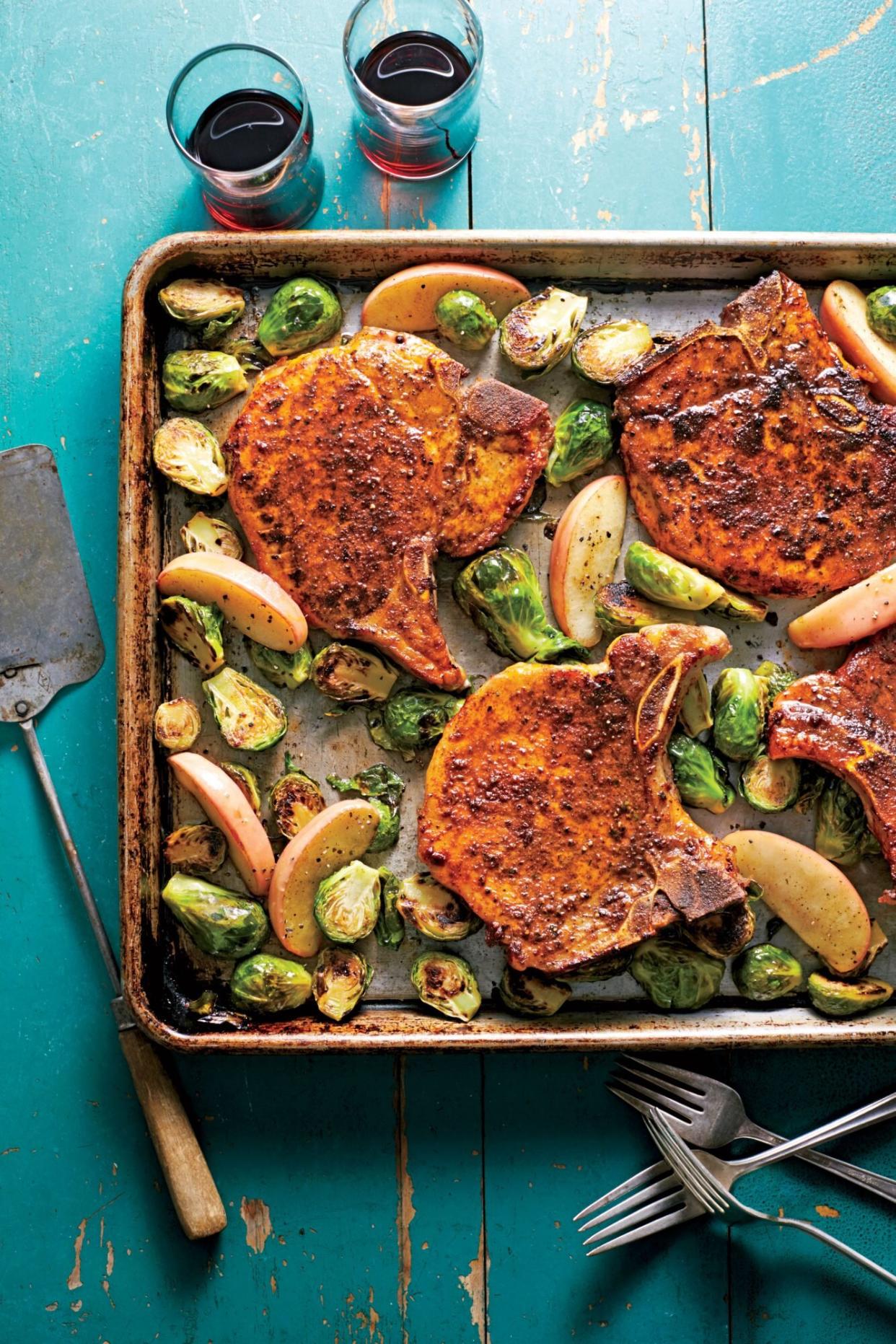7 Mistakes to Avoid When Cooking Pork Chops

Alison Miksch
TABLE OF CONTENTS
On This Page
Buying Boneless
Skimping on the Seasoning
Cooking Them Cold
Keeping It Too Hot
Trimming the Fat
Not Using a Meat Thermometer
Skipping the 'Rest' Stage
Pork chops are a great choice for weeknight meals but, like most meats, if you have cooked it incorrectly just once you may be hesitant to try it again. When cooked right, a pork chop can be a juicy and flavorful main course, either as a quick and easy weeknight supper or a nice holiday dinner. Pork chops can be prepared on the stovetop, baked in the oven, or grilled outside. Pair them with seasonal vegetables, and don't forget to end the meal with a sweet treat. To guarantee a delicious outcome, make sure you are not making one of these common mistakes the next time pork chops are on the menu.
Buying Boneless
A bone-in chop has two things going for it: the bone helps provide some protection from overcooking by slowing down how fast the meat cooks. You have more wiggle room in getting a nice, crispy sear on your chop. Second, and the debate rages on about this, we believe the bone gives the meat a richer flavor. So skip over the boneless chops with little or no fat and go for the tastier bone-in.
Skimping on the Seasoning
Depending on the cut and amount of marbling, a pork chop can be a lean, almost tasteless cut of meat. Seasoning with a generous amount of salt before cooking is an important step in bringing out the meat's natural flavors. Be creative and use a blend of your favorite seasonings and dry herbs with the salt. Even a quick 30-minute dry brine, which seasons the meat inside and out, will improve the taste and texture of the meat. Or you can season the chops and put them back in the fridge several hours before cook time. Seasoning also goes a long way in making that flavorful crust that pork chops are known and loved for.
Cooking Them Cold
Taking the chops from the fridge directly to a hot pan is not a good idea. If the meat is too cold, the outside will get done and possibly overcook before the inside comes to the right temperature. Giving the pork a little time to come to room temp will ensure a nice crust on the outside along with a tender center. Take the previously seasoned chops (see Step 2) out of the fridge about 15 minutes before you plan to start cooking.
Keeping It Too Hot
If you are frying chops in the pan, make sure that pan is really, really hot. Searing helps create a good crust on both sides, but once that is done, drop the heat down to medium. If you keep it too high, the outside of the chop will overcook, possibly even burn, before the inside has a chance. Medium heat helps keep the outer edges of the meat tender while the center reaches the perfect temperature.
Trimming the Fat
A good pork chop will have a little layer of fat around the edges—this makes for a tastier piece of meat. Instead of trimming it off, use your tongs and stand the chop on its side in the pan while cooking and get that fat browned and deliciously crispy.
Not Using a Meat Thermometer
One of the most important appliances in your kitchen is a simple meat thermometer. Nothing ruins a meal like a piece of poorly prepared meat. Undercooked pork carries the risk of food-borne illness, and overcooked pork can be dried-out, tough, and chewy. Cook your chop until it's around 135 degrees, and then transfer it to a cutting board—the residual heat will bring it to the USDA's recommended 145 degrees.
Skipping the 'Rest' Stage
Let your pork rest once you get it on the cutting board, even after it has reached the recommended temperature. Don't touch it, don't cut it, don't even pinch off a piece of that crispy, succulent fat for 10 minutes. Cutting into the meat too early will allow all the flavorful juices to escape onto the board instead of getting redistributed into the meat. Give the chops this necessary time so the fibers of the meat relax and soak up the juices, resulting in a tender, juicy pork chop.
While you wait, you can put the finishing touches on your table setting or toss a quick green salad. Call the family to the table—supper is ready.

